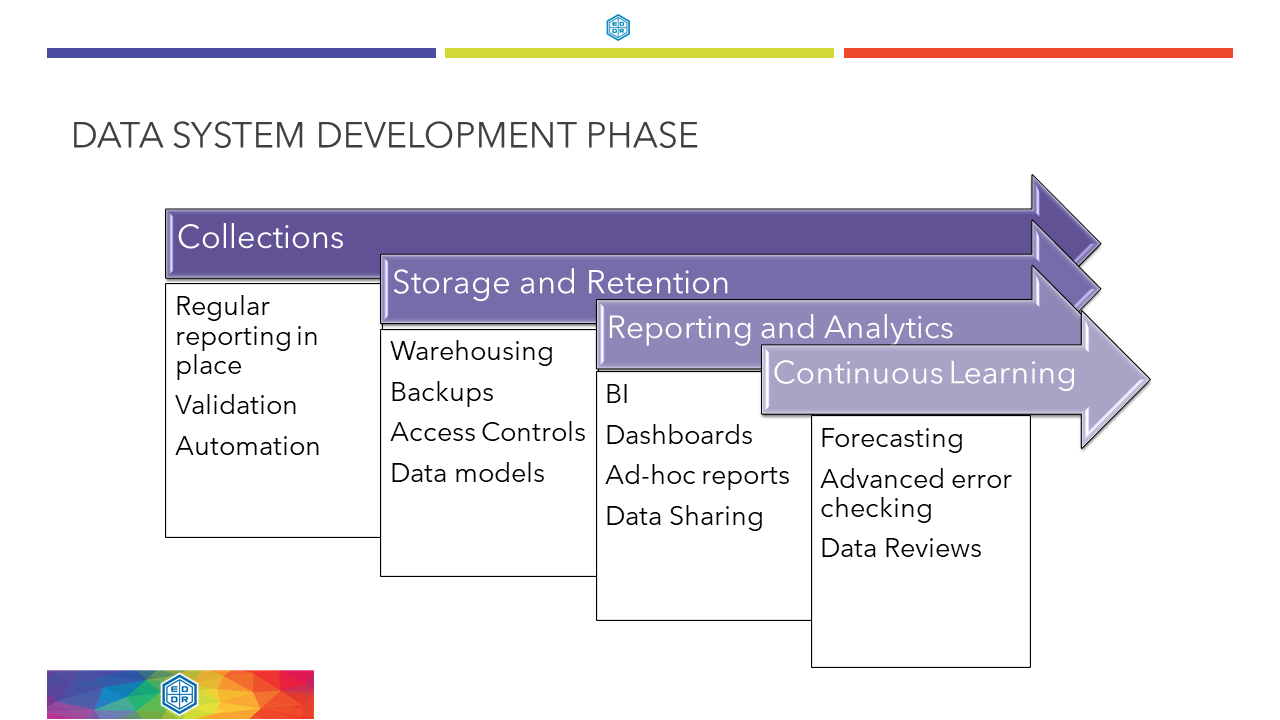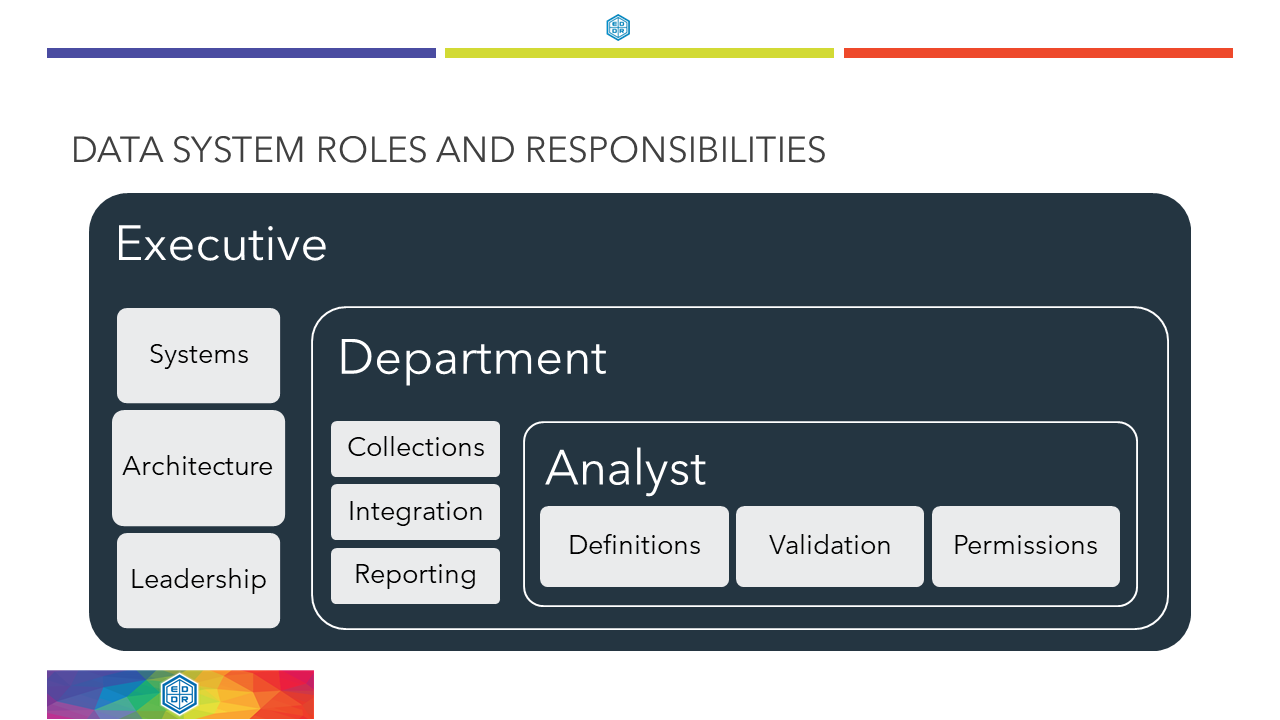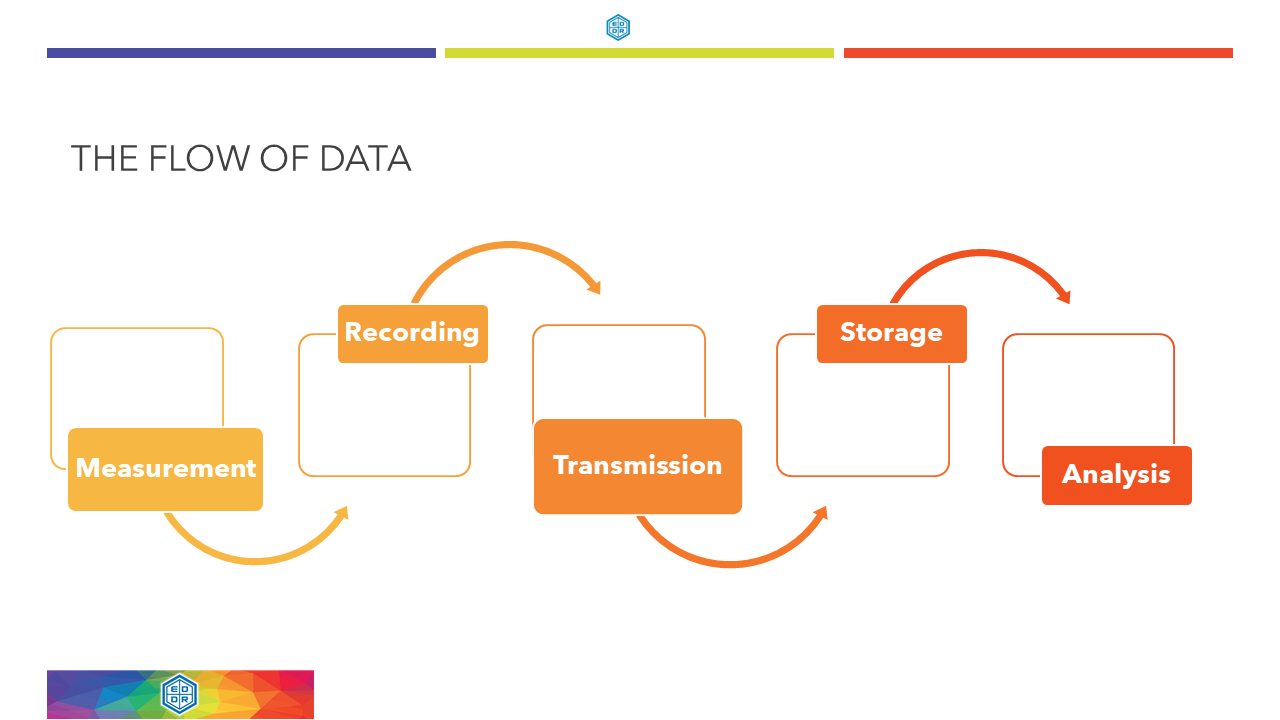In EDDR Volume 2 we provide an introduction to data governance in chapter 5. This post summarizes one part of that chapter by describing the three data governance frameworks.
Lifecycle
The first framework is helpful when thinking about the current design focus of your data system. It is also helpful early in the development of a data system to help keep stakeholders organized around the current needs.

Advantages
- Helps focus on building a solid foundation
- Identifies the connection between good collections and later analytics
Drawbacks
- Mature data systems need to work on all these pieces at once
- Architecture and system integration challenges can rise to the top (see below)
Roles and Responsibilities
This is a people/role centered framework that focuses on which levels of the organization. This helps individuals assess their role in the organization and begint to see the data governance obligations associated with that role.

Advantages
- Divides and locates the work where responsibility and expertise sit
- Helps organize thinking about where decision making occurs depending on level of granularity
- Demonstrates that data governance is an organizational responsibility
Drawbacks
- A three-tier hierarchy may be too flat
- Just because it is written does not mean that reponsibility will cross levels
Flow of Data
Data is always in motion in a data system. Every point where data is handed off or transitions is a point where data governance decisions occur and need to be applied. This frame focuses on individual data elements and traces their movement in the system as a way of identifying key governance questions.

Advantages
- Puts the data in data governance
- Sheds light on the often under-analyzed collection process and data use process on each end
- Makes knowing the data pipeline an organizational activity and not an individual activity
Drawbacks
- Data flow discussions can often end with unhelpful conclusions, i.e. “the vendor is the problem”
- Mapping the flow of data for many elements can be very time-consuming